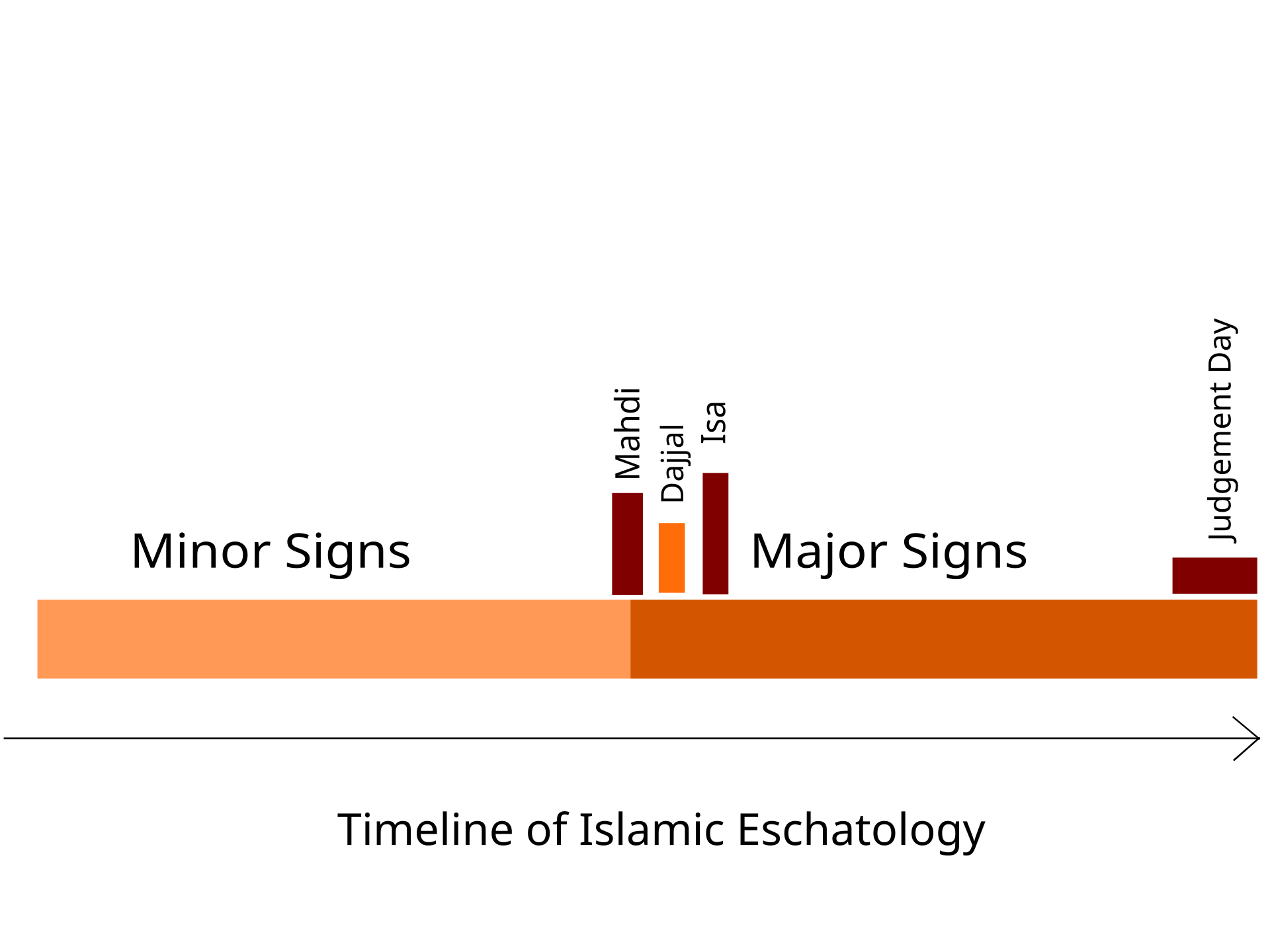Messianic Time

池田光穂
メシア的時間について
Messianic Time

池田光穂
■中世の人びとのメシア的時間(ベンヤミン)/同時 性(→メシアニズム)
「メシアはたしかに解放者として来るのだが、それだ けではない、彼はアンティクリストの克服者としてやってくるのだ」——ベンヤミン「歴史哲学テーゼ」IV
「歴史は構成の対象であって、この構成の場を成すの は均質で空虚な時間なのではなく、現在時(Jetztzeit)によって満たされた時間である」——ベンヤミン「歴史哲学テーゼ」XIV
「歴史主義は歴史のさまざまな要素の因果関係を確立 することで満足する。しかし、いかなる事実も、それがなにかの原因だとしても、そのことだけですでに歴史的事実なのではない。それは、死後の生において、 何千年も隔てられているやもしれぬもろもろの出来事によって、歴史的事実となったのだ。このことから出発する歴史家は、数珠を爪繰(つまぐ)るようにもろ もろの出来事の連なりをたどることをやめる。自分自身の時代が以前のある特定の時代と出会っている状況布置(コンステラツィオーン)を、彼は把握する。そ のようにして彼は現在の概念を、メシア的な時間のかけらが混じりこんでいる〈現在時〉として根拠づけるのである」(ベンヤミンコレクション1:664)。
「周知のように、未来を探ることはユダヤ人には禁じ
られていた。律法と祈祷は、その代わりに、彼らに想起を教えている。占師に予言を求める人びとが囚われている未来の魔力から、想起はユダヤ人を解放した。
しかしそれだからといって、ユダヤ人にとって未来が、均質で空虚な時間になったわけではやはりなかった。というのも、未来のどの瞬間も、メシアがそれを潜
り抜けてやってくる可能性のある、小さな円だったのだ」(ベンヤミンコレクション1:665)。
■アウエルバッハ
「(アウエルバッハ『ミメーシス』上:84からの引
用)「たとえばイサクの生贄のような事件が
キリストの受難を予兆するものとして解釈さ
れ、したがって、前者において後者が告知され約束され、後者が前
者を充足するならば、時間的にも因果関係のうえからもつながりのない二つの出来事のあいだにひとつの関係が確立されることになる。この関係
は水平的次元では理性によって確立することができない」
(pp.42-43:アンダーソンの頁:1997年邦訳版、p.48)
■近代的時間概念=「均質で空虚な時間」 (p.44;p.55)
─社会的有機体が均質で空虚な時間の暦のなかを暦に従って移動してゆくという観念は、国民の観念
とまったくよくにている。国民もまた着々と歴史を下降し(あるいは上昇し)動いてゆく堅固な共同体と観念される(p.45)。


■ウルリッヒ・ベックらが共有する未来時間への「恐 怖」について
「それどころか正しく言えば、未来は、かつてほど過去との類似性をもたなくなり、いくつか基本的な点でわれわれを非常に脅か すものになりはじめている」(ベックら 1997:5)。この反応は、時間が脱臼するとか、未来は、希望に満 ち満ちている(予兆がなくても未来に希望を託すことも可能だが)という感覚がない。 ベックらが、理不尽な恐怖を抱くのは、それが《過去との形相的類似性の喪失》であり《現在が未来に侵食するという脅威》概念にほかならないからだ。ハイデ ガーの「不安」の概念(『存在と時間』第30節情状性の一つの様態としての恐れ)に酷似する。それは、得体のしれない時間的未来に直面する人間の恐怖だ。
"That in the face of
which we fear, the 'fearsome', is in every case something which we encounter within-the-world and which may
have either
readiness-to-hand, presence-at-hand, or Dasein-with as its kind of Being.
We are not going to make an ontical report on those entities which can
often and for the most part be 'fearsome': we are to define the
fearsome
phenomenally in its fearsomeness. What do we encounter in fearing that
belongs to the fearsome as such ? That in the face of which we fear can
be characterized as threatening. Here several points must be
considered." (英訳, p.179, 原著 S. 140)
●マヤの時間概念
★メシア主義・メシア論(Mesianismo)→「メシアニズム」
| El mesianismo
es una tendencia de la cosmovisión o la ideología que se relaciona con
una particular interpretación de la historia donde el cambio de un
estado del desarrollo de una sociedad o grupo de creyentes será
originado por la llegada de un "mesías" o héroe, al que corresponde el
establecimiento de un nuevo orden que dará origen al mundo utópico.1 Aunque el más conocido de los mesianismos es el de la tradición judeocristiana, es frecuente su desarrollo en otros contextos, especialmente en aquellos donde la opresión social es fuerte. Como ejemplos de mesianismo se encuentran —además del mesianismo judío— el mesianismo cristiano, el adventismo, el islam, particularmente el islam chií, los cultos cargo de Melanesia, varias iglesias nativas de base cristiana o islámica que se desarrollaron en África subsahariana después del proceso de descolonización durante el siglo xx, etc.2 En el mundo secular moderno, especialmente en la política, al mesianismo se lo relaciona con el populismo, personalismo extremo, autoritarismo y formas antidemocráticas siendo representantes de ese fenómeno Jair Bolsonaro, Elisa Carrió y Silvio Berlusconi.3456Las figuras mesianicas son descritas como fuertemente narcisistas y tendencias a la megalomanía con escala capacidad de tolerar la crítica789 y con el culto a la personalidad.10 |
メシアニズムとは世界観やイデオロギー的傾向のことで、ある社会や信者の集団の発展状態の変化が、「救世主」や英雄の登場によってもたらされるという特定の歴史解釈に関連している。 メシアニズムで最もよく知られているのはユダヤ教とキリスト教の伝統であるが、他の文脈、特に社会的抑圧が強いところでも頻繁に展開されている。メシアニ ズムの例としては、ユダヤ教のメシアニズムに加え、キリスト教のメシアニズム、アドベンチズム、イスラム教、特にシーア派イスラム教、メラネシアの貨物カ ルト、20世紀の脱植民地化プロセス後にサハラ以南のアフリカで発展した、キリスト教やイスラム教を基盤とするさまざまな土着教会などが挙げられる2。 現代の世俗世界、特に政治の世界では、メシアニズムはポピュリズム、極端な個人主義、権威主義、反民主主義的な形態と結びついており、ジャイル・ボルソナロ、エリサ・カリオ、シルビオ・ベルルスコーニなどがその代表である3456。 |
| Mesianismo bíblico211 En el libro de II Samuel, el mesianismo viene visto como una idea que manifiesta la esperanza de una felicidad completa. Esta idea tiene un aspecto soteriológico pues ve una esperanza en la intervención futura de Dios en favor del pueblo escogido. Hay un aspecto escatológico, pues esta intervención divina se vislumbra como la intervención definitiva. La idea mesiánica tiene también un aspecto mediacional, esto es, vendrá realizada por un Mesías-mediador.9 |
聖書のメシアニズム211 サムエル記第二章では、メシアニズムは完全な幸福の希望を現す思想として捉えられている。この思想には、ソテロジー的な側面があり、選ばれた民のために神 が将来介入することに希望を見出しているからである。この神の介入は決定的な介入と見なされるからである。メシア的思想には仲介的な側面もある。つまり、 それはメシア=仲介者によって実現されるのである9。 |
| https://es.wikipedia.org/wiki/Mesianismo |
|
| Messianism
is the belief in the advent of a messiah who acts as the savior of a
group of people.[1][2] Messianism originated as a Zoroastrian religious
belief and followed to Abrahamic religions,[3] but other religions also
have messianism-related concepts. Religions with a messiah concept
include Hinduism (Kalki) Judaism (Mashiach), Christianity (Christ),
Islam (Mahdi and Isa Masih), Druze faith (Hamza ibn Ali),[4][5]
Zoroastrianism (Saoshyant), Buddhism (Maitreya), Taoism (Li Hong), and
Bábism (He whom God shall make manifest). In Judaism, the messiah will be a future Jewish king from the line of David and redeemer of the Jewish people and humanity.[1][6] In Christianity, Jesus is the messiah,[note 1] the savior, the redeemer, and God.[1][3] In Islam, Jesus was a prophet and the messiah of the Jewish people who will return in the end times.[3] |
救世主信仰(メシアニズム)とは、特定の集団の救世主として行動する救
世主の出現を信じる信仰である。[1][2] 救世主信仰はゾロアスター教の信仰として始まり、アブラハムの宗教に受け継がれたが、[3]
他の宗教にも救世主信仰に関連する概念がある。救世主の概念を持つ宗教には、ヒンドゥー教(カルキ)、ユダヤ教(メシア)、キリスト教(キリスト)、イス
ラム教(マフディーとイーサー・マサイ)、ドルーズ派(ハムザ・イブン・アリー)[4][5]、ゾロアスター教(サオシャン)、仏教(弥勒)、道教(李
洪)、バビ教(神が明らかにする者)などがある。 ユダヤ教では、救世主はダビデ家の血筋を引く未来のユダヤ人の王であり、ユダヤ人と人類の救世主であるとされる。[1][6] キリスト教では、イエスが救世主であり[注釈 1]、救い主、贖い主、神であるとされる。[1][3] イスラム教では、イエスは預言者であり、終末の時に戻ってくるユダヤ人の救世主であるとされる。[3] 参考文献 |
| Abrahamic religions For a more comprehensive list, see List of messiah claimants. Judaism Main articles: Messiah in Judaism and Chabad messianism For a more comprehensive list, see List of Jewish messiah claimants. Messiah (Hebrew: משיח; mashiah, moshiah, mashiach, or moshiach, ("anointed [one]") is a term used in the Hebrew Bible to describe priests and kings, who were traditionally anointed. For example, Cyrus the Great, the King of Persia, is referred to as "God's anointed" (Messiah) in the Bible. In Jewish messianic tradition and eschatology, the term came to refer to a future Jewish king from the Davidic line, who will be "anointed" with holy anointing oil and rule the Jewish people during the Messianic Age. In Standard Hebrew, the messiah is often referred to as Melekh ha-Mashiaḥ (מלך המשיח), literally "the Anointed King". Rabbinic Judaism and current Orthodox Judaism hold that the messiah will be an anointed one, descended from his father through the Davidic line of King David, who will gather the Jews back into the Land of Israel and usher in an era of peace. Following the Expulsion of Jews from Spain in 1492 many Spanish rabbis, such as Abraham ben Eliezer Halevi, believed that the year 1524 would be the beginning of the Messianic Age and that the Messiah himself would appear in 1530–31.[9] Orthodox Jewish messianic movements have occasionally emerged throughout the centuries among Jewish communities worldwide. These surround various messiah claimants. However, from the Jewish view, the claimants failed to deliver the promises of redemption, and generally remained with only a handful of followers. Excepting Jesus, the most popular messiah claimants were Simon bar Kokhba in 2nd century Judea, Nehemiah ben Hushiel in the 7th century Sasanian Empire, Sabbatai Zevi in the 17th century Ottoman Empire (precursor to Sabbateans), Jacob Frank in 18th century Europe, Shukr Kuhayl I and Judah ben Shalom in 19th century Ottoman Yemen. There are those who currently identify the 20th century Menachem Mendel Schneerson (the Lubavitcher Rebbe) as the Mashiach. Other denominations, such as Reform Judaism, believe in a Messianic Age when the world will be at peace, but do not agree that there will be a messiah as the leader of this era. Christianity Main articles: Christ, Christology, and Jesus in Christianity See also: Christian eschatology and List of people claimed to be Jesus In Christianity, the Messiah is called the Christ (/kraɪst/; Greek: Χριστός, romanized: Khristós, lit. 'Anointed One'; Hebrew: מָשִׁיחַ, romanized: Māšîah, lit. 'Mashiach'), the saviour and redeemer who would bring salvation to the Jewish people and mankind. "Christ" is the Greek translation of "Messiah", meaning "Anointed one". The role of the Christ, the Messiah in Christianity, originated from the concept of the messiah in Judaism. Though the conceptions of the messiah in each religion are similar, for the most part they are distinct from one another due to the split of early Christianity and Judaism in the 1st century. Christians believe Jesus to be the Jewish messiah (Christ) of the Hebrew Bible and the Christian Old Testament. Christians believe that the messianic prophecies were fulfilled in his mission, death, resurrection, and ascension to his Session on the heavenly throne, where "he sat down at the right hand of God, where he is now waiting until his enemies are made a footstool for his feet" (Heb 10:12–13 NET, quoting the Davidic royal Psalm 110:1). Christians believe that the rest of the messianic prophecies will be fulfilled in the Second Coming of Christ. One prophecy, distinctive in both the Jewish and Christian concept of the messiah, is that a Jewish king from the Davidic line, who will be "anointed" with holy anointing oil, will be king of God's kingdom on earth, and rule the Jewish people and mankind during the Messianic Age and World to come. Islam Main articles: Masih, Mahdi, and Mahdism In Islam (Shia and Sunni), the Mahdi is considered as the promised one [6] but there is a difference in who the Mahdi is, the Shiites of the Twelve Imams believe that the Mahdi is Muhammad, the son of Hassan Askari, the twelfth Imam and the Imam of their time, who was born before and now He is hidden from most people by Allah/god's will for more than a thousand years and appears at the appointed time. But according to some people of the Sunnah, Mahdi is someone from the Prophet's generation (probably Sadat's dynasty) who has not yet been born. He will be born in the future and become the savior of mankind. Also, most of the followers of Sunnah consider Mahdi as an ordinary and very pure person, which is in contradiction with other prophecies of Abrahamic religions. Most of the Abrahamic religions have emphasized that the savior of the end of time is a divine messenger for humanity. According to Shiites, Mahdi is a divine chosen one, the proof of God and infallible. Also, they have mentioned many signs about the appearance of Mahdi. Shiites consider Mahdi an imam, and unlike Sunnis, according to their claim, relying on hadiths, traditions and verses of the Qur'an, especially the affliction of Abraham in Surah Baqarah, they consider Imamate to be a divine position and it is the highest position in the system of previous creation. They know Muhammad's status as the highest of creations. Shiites emphasize the imams' formative authority and consider them to be the manifestation of God, and they have repeatedly mentioned in their works the superhuman powers given to imams by God. In fact, Shiites are not the first ones who have proposed the savior of the apocalypse as a manifestation of God. In Hindu religion, the savior of the end of time is called Avatar, which means manifestation, Avatar comes from the word Avatarai, which means the manifestation of a superior power. Some groups of Muslims, especially the Wahhabis, consider this claim of Shiites to be completely polytheistic and superstitious. While in the Torah, the book of Genesis, 12 kings from Ismael's generation are mentioned, and Shiites consider these 12 kings to be their 12 imams. In the Sunni hadith books, 12 caliphs are mentioned after the Prophet of Islam, the last of whom is the promised Mahdi. All Muslims agree on the return of Jesus Christ, and some Sunnis and all Shiites of twelve Imams believe in the return of Christ at the time of the appearance of the Mahdi and consider him one of the special helpers of the promised Mahdi.[10] For a more comprehensive list, see List of Mahdi claimants. See also: Jesus in Islam and Islamic eschatology  Mainstream Sunni timeline  Mainstream Islamic timeline In Islam, Isa ibn Maryam is the al-Masih ("Jesus son of Mary, the Messiah") who is believed to have been anointed from birth by Allah with the specific task of being a prophet and a king. In Islam, the Mahdi is believed to hold the task of establishing the truth and fighting against divisions of Islam, uniting all sects before the return of Jesus who will kill the false messiah Al-Masih ad-Dajjal (similar to the Antichrist in Christianity), who will emerge shortly before him in human form in the end of the times, claiming that he is the messiah.[11][12] Then Jesus will pray for the death of Gog and Magog (Yajuj Majuj) who are an ancient tribe sealed away from humanity who will rise to cause destruction. After he has destroyed al-Dajjal, Mahdi's final task will be to become a just king and to re-establish justice. After the death of Mahdi, Jesus' reign of the messianic King will begin bringing long-lasting peace in the world until the Day of Judgement. Sahih al-Bukhari, 3:43:656: Narrated Abu Hurairah: Allah's Apostle said, "The Hour will not be established until the son of Mary (Mariam) (i.e. Jesus) descends amongst you as a just ruler, he will break the cross, kill the pigs, and abolish the Jizya tax. Money will be in abundance so that nobody will accept it (as charitable gifts)." The Ahmadiyya Muslim community believes that the prophecies regarding the advent of the Messiah and Mahdi have been fulfilled in the person of Mirza Ghulam Ahmad of Qadian. He claimed to be the Promised Messiah and Mahdi, the metaphorical second coming of Jesus of Nazareth and the divine guide, whose advent was foretold by the Prophet of Islam, Muhammad.[13] |
アブラハムの宗教 より包括的なリストについては、救世主を名乗る者の一覧を参照のこと。 ユダヤ教 詳細は「ユダヤ教におけるメシア」および「ハバッド・メシア主義」を参照 より包括的なリストについては、ユダヤ教の救世主を名乗る者の一覧を参照のこと。 救世主(ヘブライ語:משיח;mashiah、moshiah、mashiach、またはmoshiach、「油を注がれた者」)とは、伝統的に油を注 がれた祭司や王を指すためにヘブライ語聖書で用いられる用語である。例えば、ペルシア王キュロス2世は聖書において「神の油を注がれた者」(救世主)と称 されている。 ユダヤ教の救世主の伝統と終末論では、この用語はダビデ家の血筋を引く未来のユダヤ人の王を指すようになり、その王は聖なる油注ぎの油で「油を注がれ」、 救世主の時代にユダヤ人を統治することになる。標準ヘブライ語では、救世主はしばしば「油を注がれた王」を意味する「メレク・ハ・マシア」(Melekh ha-Mashiaḥ)と呼ばれる。 ラビ・ユダヤ教と現在の正統派ユダヤ教では、救世主は油を注がれた者であり、ダビデ王の血統を父祖に持つ者であると信じられている。その救世主は、ユダヤ人をイスラエルの地に再び集め、平和の時代をもたらす。 1492年のスペインからのユダヤ人追放の後、アブラハム・ベン・エリアス・ハレビなどの多くのスペインのラビたちは、1524年が救世主の時代の始まりであり、救世主自身は1530年から1531年に現れると信じていた。 正統派ユダヤ教の救世主運動は、何世紀にもわたって世界のユダヤ人社会で時折発生している。これらは、さまざまな救世主を主張する人々を取り巻いている。 しかし、ユダヤ人の見解では、これらの主張者は贖罪の約束を果たすことができず、一般的に信奉者はほんの一握りにとどまった。イエスを除いて、最も人気の ある救世主とされた人物は、2世紀のユダヤのシモン・バル・コバ、7世紀のササン朝ペルシアのネヘミヤ・ベン・フシエル、17世紀のオスマン帝国のサバタ イ・ゼヴィ(サバタイ派の先駆者)、18世紀のヨーロッパのヤコブ・フランク、19世紀のオスマン領イエメンのシュクル・クーヘイル1世とユダ・ベン・ シャロムなどである。現在、20世紀のメナヘム・メンデル・シュネールソン(ルバビチ派のラビ)をメシアと見なす人々もいる。 改革派ユダヤ教などの他の宗派は、世界が平和になるメシアの時代を信じているが、この時代の指導者としてメシアが現れることには同意していない。 キリスト教 主な記事:キリスト、キリスト論、キリスト教におけるイエス 関連項目:キリスト教終末論、イエスとされる人物の一覧 キリスト教において、救世主はキリスト(/kraɪst/;ギリシア語:Χριστός、ローマ字表記:Khristós、直訳:『油を注がれた者』;ヘ ブライ語:מָשִׁיחַ、ローマ字表記: Māšîah、直訳「マシアハ」)は、ユダヤ人と人類に救いをもたらす救世主であり、贖い主である。「キリスト」は「メシア」のギリシャ語訳であり、「油 を注がれた者」を意味する。キリスト教における救世主、メシアの役割は、ユダヤ教における救世主の概念に由来する。各宗教における救世主の概念は類似して いるが、大部分は1世紀に初期キリスト教とユダヤ教が分裂したことにより、互いに異なるものとなっている。キリスト教徒は、イエスがヘブライ語聖書(旧約 聖書)におけるユダヤ人の救世主(キリスト)であると信じている。 キリスト教徒は、救世主の予言は、彼の使命、死、復活、そして天国の玉座に昇天したことで成就したと信じている。「彼は神の右に座し、今や、敵が足台とさ れるその日まで、そこで待ち望んでいる」(ヘブライ人への手紙10:12-13、ダビデ王の王権詩篇110:1を引用)。キリスト教徒は、救世主に関する その他の予言はキリストの再臨の際に成就すると信じている。救世主に関するユダヤ教とキリスト教の概念の両方において特徴的な予言のひとつは、ダビデ家の ユダヤ人王が聖なる香油で「油を注がれ」、神の地上の王国の王となり、救世主の時代と来るべき世界の到来の間、ユダヤ人と人類を統治するというものであ る。 イスラム教 主な記事:救世主、マフディー、マフディー主義 イスラム教(シーア派とスンナ派)では、マフディーは約束された者とみなされているが[6]、マフディーが誰であるかについては異なる見解がある。十二イ マーム派のシーア派は、マフディーはハサン・アスカリー(十二イマームの一人であり、彼らの時代のイマーム)の息子であるムハンマドであると信じている。 マフディーは、千年前にアッラー/神の意志によってほとんどの人々から姿を隠し、定められた時に現れる。しかしスンナ派の一部の人々によると、マフディー は預言者の世代(おそらくサダト王朝)に属する人物で、まだ生まれていない。彼は将来誕生し、人類の救世主となる。また、スンナ派の信者の大半は、マフ ディーを普通の、非常に純粋な人格者であるとみなしているが、これはアブラハムの宗教の他の予言と矛盾している。アブラハムの宗教のほとんどは、終末の救 世主は人類への神の使者であると強調している。シーア派によると、マフディーは神に選ばれた者であり、神の証であり、誤りを犯さない。また、彼らはマフ ディーの出現に関する多くの兆候についても言及している。シーア派はマフディーをイマームと見なしており、スンナ派とは異なり、ハディース、伝統、コーラ ンの節、特に第2章のイブラーヒームの苦悩に依拠していると主張している。彼らは、イマーム職は神聖な地位であり、それは以前の創造の体系における最高の 地位であると考えている。彼らは、ムハンマドの地位が創造の最高位であることを知っている。シーア派はイマームの形成上の権威を強調し、彼らを神の顕現で あるとみなしている。彼らは著作の中で、神からイマームに与えられた超人的な力を繰り返し言及している。実際、終末の救世主を神の顕現として提案したのは シーア派が最初ではない。ヒンドゥー教では、終末の救世主はアヴァター(顕現)と呼ばれ、アヴァターはアヴァターライという言葉に由来し、それは優れた力 の顕現を意味する。イスラム教徒の一部のグループ、特にワッハーブ派は、シーア派の主張を完全に多神教で迷信的であるとみなしている。トーラー(創世記) には、イスマエルの世代から12人の王が現れることが記されており、シーア派はこれらの12人の王を自分たちの12人のイマームであるとみなしている。ス ンニ派のハディース書には、イスラム教の預言者の後に12人のカリフが現れることが記されており、最後のカリフは約束された救世主マフディーである。すべ てのイスラム教徒はイエス・キリストの再来を信じており、スンナ派の一部と十二イマーム派のシーア派は、マフディーの出現の際にキリストが再来すると信 じ、マフディーの特別な助っ人の一人であると考えている。 より包括的なリストについては、マフディーの主張者のリストを参照のこと。 関連項目:イスラム教におけるイエス、イスラム教終末論  スンナ派の主流の年表(終末論)  イスラム教スンニ派の年表 イスラム教において、イーサー・イブン・マリアムは、預言者であり王であるという特定の任務を授けられて生まれたと信じられている救世主(マシア、メシ ア)である。イスラム教では、マフディーは真実を確立し、イスラム教の分裂と戦い、イエスが戻ってくる前にすべての宗派を統一するという任務を担っている と信じられている。イエスは、終末の時代に間もなく人類の姿で現れ、救世主であると主張する偽救世主アル・マシ・アド・ダッジャル(キリスト教における反 キリストに類似)を殺すことになる。その後、イエスはゴグと 人類から封印され、破壊をもたらすために立ち上がる古代の部族であるマゴグ(ヤジュージュ・マジュージュ)の死を祈る。マハディは、アル・ダッジャルを滅 ぼした後、最後の任務として正義の王となり、正義を再確立する。マハディの死後、救世主である王の治世が開始され、審判の日まで世界に永続する平和をもた らす。 サヒーフ・アル=ブハーリー、3:43:656:アブー・フライラが伝えたところによると、 預言者は言った。「マリア(マリアム)の子(すなわちイエス)が、公正な統治者としてあなたがたの間に降り立つまでは、審判の時は到来しないだろう。彼は 十字架を壊し、豚を殺し、ジズヤ税を廃止するだろう。お金は豊富にあるので、誰もそれを(慈善の贈り物として)受け取らないだろう。」 アハマディア・イスラム教徒のコミュニティは、救世主とマフディーの出現に関する予言は、カディアンのミルザ・グール・アフマドという人格において成就し たと信じている。彼は、約束された救世主でありマフディーであり、ナザレのイエスの比喩的な再臨であり、神の導き手であると主張した。その出現は、イスラ ム教の預言者ムハンマドによって予言されていた。[13] |
| Druze faith In the Druze faith, Jesus is considered the Messiah and one of God's important prophets,[14][15] being among the seven prophets who appeared in different periods of history.[14][15] According to the Druze manuscripts Jesus is the Greatest Imam and the incarnation of Ultimate Reason (Akl) on earth and the first cosmic principle (Hadd),[4] and regards Jesus and Hamza ibn Ali as the incarnations of one of the five great celestial powers, who form part of their system.[16] Druze doctrines include the beliefs that Jesus was born of a virgin named Mary, performed miracles, and died by crucifixion.[4] In the Druze tradition, Jesus is known under three titles: the True Messiah (al-Masih al-Haq), the Messiah of all Nations (Masih al-Umam), and the Messiah of Sinners. This is due, respectively, to the belief that Jesus delivered the true Gospel message, the belief that he was the Saviour of all nations, and the belief that he offers forgiveness.[17] Druze believe that Hamza ibn Ali was a reincarnation of Jesus,[18] and that Hamza ibn Ali is the true Messiah, who directed the deeds of the messiah Jesus "the son of Joseph and Mary", but when messiah Jesus "the son of Joseph and Mary" strayed from the path of the true Messiah, Hamza filled the hearts of the Jews with hatred for him – and for that reason, they crucified him, according to the Druze manuscripts.[4][5] Despite this, Hamza ibn Ali took him down from the cross and allowed him to return to his family, in order to prepare men for the preaching of his religion.[4] |
ドルーズ派の信仰 ドルーズ派の信仰では、イエスは救世主であり、神の重要な預言者の一人であると考えられている。[14][15] イエスは、異なる時代に現れた7人の預言者の一人である。[14][15] ドルーズ派の写本によると、イエスは地上における最高のイマームであり、究極の理性(Akl)の化身であり、最初の宇宙原理(Hadd)である。[4] また、イエスとハムザ・イブン・アリーを、5つの偉大な天上の力の化身であるとみなしている。 彼らの体系の一部を形成する5つの偉大な天上の力の1つの化身であると見なしている。[16] ドルーズ派の教義には、イエスがマリアという名の処女から生まれ、奇跡を行い、磔刑によって死んだという信仰が含まれている。[4] ドルーズ派の伝統では、イエスは3つの称号で知られている。真の救世主(al-Masih al-Haq)、全人類の救世主(Masih al-Umam)、罪びとの救世主である。これはそれぞれ、イエスが真の福音のメッセージを伝えたという信念、彼が全人類の救世主であるという信念、そし て彼が赦しを与えるという信念によるものである。 ドルーズ派は、ハムザ・イブン・アリーがイエスの生まれ変わりであると信じており[18]、ハムザ・イブン・アリーこそが真の救世主であり、救世主イエス 「ヨセフとマリアの子」の行いを導いたが、救世主イエス「ヨセフとマリアの子」が真の救世主の道から逸れたため、ハムザはユダヤ人の心を彼に対する憎悪で 満たした。そのため、彼らはハムザを十字架に磔にしたと、ドルーズ派の写本には記されている 。[4][5] にもかかわらず、ハムザ・イブン・アリーは、彼を十字架から降ろし、家族のもとへ戻すことを許可した。それは、彼の宗教の布教に人々を準備させるためだっ た。[4] |
| Bábism and Baháʼí Faith Main article: Manifestation of God (Baháʼí Faith) He whom God shall make manifest (Arabic: من يظهر الله, Persian: مظهر کلّیه الهی) is a messianic figure in the religion of Bábism. The messianic figure was repeatedly mentioned by the Báb, the founder of Bábism, in His book, the Bayán. The Báb described the messianic figure as the origin of all divine attributes, and stated that his command was equivalent to God’s command. The Báb stated that once the messianic figure had arrived, the perusal of one of his verses was to be greater than a thousand perusals of the Bayán.[19] The prediction is widely recognized as being fulfilled by Bahá'u'lláh, the founder of the Baháʼí Faith.[20] |
バブ教とバハーイー教 詳細は「神の顕現(バハーイー教)」を参照 神が顕現させる者(アラビア語: من يظهر الله、ペルシア語: مظهر کلّیه الهی)は、バブ教における救世主的な存在である。この救世主的人物は、バビズムの創始者であるバブが著した『バヤン』の中で繰り返し言及されている。 バブは救世主的人物を神聖な属性のすべてを起源とする存在と表現し、その命令は神の命令に等しいと述べた。バブは、救世主が現れた暁には、その詩の一節を 読むことは、バイヤンの千回分の読書に匹敵するだろうと述べた。[19] この予言は、バハーイー教の創始者であるバハーウッラーによって成就したと広く認識されている。[20] |
| Other religions Buddhism Main articles: Maitreya, Buddhist eschatology, and List of Buddha claimants Maitreya is a bodhisattva who in the Buddhist tradition is to appear on Earth, achieve complete enlightenment, and teach the pure dharma. According to scriptures, Maitreya will be a successor of the historic Śākyamuni Buddha, the founder of Buddhism. The prophecy of the arrival of Maitreya is found in the canonical literature of all Buddhist sects[citation needed] (Theravāda, Mahāyāna, Vajrayāna) and is accepted by most Buddhists as a statement about an actual event that will take place in the distant future. Although Maitreya Buddha appears in the canonical literature shared by many sects of Buddhism, Buddhists in different historical contexts have conceived of Maitreya Buddha in different ways. In early medieval Chinese Buddhism, for example, Taoist and Buddhist ideas combined to produce a particular emphasis on the messianic role of a Bodhisattva called "Prince Moonlight."[21] Furthermore, the Chinese Maitreyan traditions were themselves marked by considerable diversity. Erik Zürcher has argued that a certain "canonical" Maitreyan cult from the fourth to sixth centuries believed Maitreya to inhabit the Tushita heaven where Buddhists might be reborn in the very distant future. Another rival tradition, however, believed that Maitreya would appear in the imminent future in this world to provide salvation during a time of misery and decline.[22] This latter form of Maitreyan belief was generally censored and condemned as heretical to the point that few manuscripts survive written by Buddhists sympathetic to this tradition.[23] Maitreya Buddha continued to be an important figure in millenarian rebellions throughout Chinese history such as in the rebellions associated with the so-called White Lotus Society. Cargo cults Main article: John Frum John Frum is a figure associated with cargo cults on the island of Tanna in Vanuatu. He is often depicted as an American World War II serviceman who will bring wealth and prosperity to the people if they follow him. He is sometimes portrayed as black, sometimes as white. Quoting David Attenborough's report of an encounter: "'E look like you. 'E got white face. 'E tall man. 'E live 'long South America."[24] |
その他の宗教 仏教 主な記事:弥勒、仏教終末論、仏陀の継承者一覧 弥勒菩薩は、仏教の伝統において、この世に現れ、完全な悟りを開き、清らかなダルマを教えるとされる菩薩である。経典によると、弥勒は歴史上の釈迦牟尼仏 陀、すなわち仏教の開祖の後継者となる。弥勒の到来に関する予言は、すべての仏教宗派(上座部仏教、大乗仏教、金剛乗仏教)の正典に記されており[要出 典]、遠い未来に実際に起こる出来事についての記述として、ほとんどの仏教徒に受け入れられている。 弥勒仏は多くの仏教宗派で共有されている正典にも登場しているが、歴史的背景の異なる仏教徒たちは、それぞれ異なる形で弥勒仏を捉えてきた。例えば、初期 の中世中国仏教では、道教と仏教の考え方が融合し、「月光王子」と呼ばれる菩薩の救世主としての役割に特別な重点が置かれるようになった。[21] さらに、中国の弥勒信仰の伝統自体も、かなりの多様性を示していた。エリック・チューリッヒャーは、4世紀から6世紀にかけての特定の「正統派」弥勒信仰 では、弥勒菩薩は遠い未来に仏教徒が生まれ変わる可能性のある兜率天に存在すると信じられていたと主張している。しかし、もう一つの対立する伝統では、弥 勒菩薩は近い将来、この世に現れ、苦難と衰退の時代に救済をもたらすと考えられていた。[22] この後者の弥勒信仰の形態は、概ね異端として検閲され、非難されたため、この伝統に共感する仏教徒によって書かれた写本はほとんど現存していない。 [23] 弥勒仏は、いわゆる白蓮教団に関連する反乱など、中国史を通じて千年王国主義の反乱において重要な存在であり続けた。 カーゴ・カルト 詳細は「ジョン・フラム」を参照 ジョン・フラムは、バヌアツのタンナ島におけるカーゴ・カルトと関連する人物である。彼は、第二次世界大戦に従軍したアメリカ人兵士として描かれることが 多く、彼に従えば人々に富と繁栄をもたらすという。彼は、黒人として、あるいは白人として描かれることもある。デヴィッド・アッテンボローによる遭遇の報 告を引用すると、「『お前たちに似ている。白い顔をしている。背の高い男だ。南アメリカに住んでいる』」[24] |
| Nazi messianism Main articles: Religion in Nazi Germany and Religious views of Adolf Hitler There has been significant literature on the potential religious aspects of Nazism. Wilfried Daim suggests that Hitler and the Nazi leadership planned to replace Christianity in Germany with a new religion in which Hitler would be considered a messiah. In his book on the connection between Lanz von Liebenfels and Hitler, Daim published a reprint of an alleged document of a session on "the unconditional abolishment of all religious commitments (Religionsbekenntnisse) after the final victory (Endsieg) ... with a simultaneous proclamation of Adolf Hitler as the new messiah."[25] Within the Wotansvolk Neo-Völkisch mystery religion, David Eden Lane is regarded as the "666 Man" and the "Man David" of prophecy, an anti-Christian "Messiah" incarnated to "warn and save the White Aryan race from near extinction". Russian and Slavic messianism See also: Polish messianism Romantic Slavic messianism held that the Slavs, especially the Russians, suffer in order that other European nations, and eventually all of humanity, may be redeemed.[26] This theme had a profound impact in the development of Pan-Slavism and Russian and Soviet imperialism; it also appears in works by the Polish Romantic poets Zygmunt Krasiński and Adam Mickiewicz, including the latter's familiar expression, "Polska Chrystusem narodów" ("Poland is the Christ of nations").[27] Messianic ideas appear in the "Books of the Genesis of the Ukrainian People" (Brotherhood of Saints Cyril and Methodius Manifesto),[28] in which universal equality and democracy in the Zaporizhian Sich, recognized as a revival of human society initially planned by God and faith in its future revival, associated with faith in the death and resurrection of Christ. Reborn Ukraine will expand universal freedom and faith in all Slavic countries and, thus designed by God, an ideal society will be restored.[29] |
ナチスの救世主思想 主な記事:ナチス・ドイツにおける宗教、アドルフ・ヒトラーの宗教観 ナチズムの潜在的な宗教的側面については、多くの文献が存在する。ウィルフリード・ダイムは、ヒトラーとナチス指導部は、ドイツにおけるキリスト教を、ヒ トラーを救世主とみなす新しい宗教に置き換える計画を立てていたと示唆している。ランツ・フォン・リーベンフェルスとヒトラーの関係について著した著書の 中で、ダイムは「最終的な勝利(Endsieg)の後、すべての宗教的誓約(Religionsbekenntnisse)を無条件に廃止する...同時 にアドルフ・ヒトラーを新たな救世主として宣言する」というセッションの文書とされるものの複製を出版した。[25] ヴォータンズフォルク・ネオ・フェルキッシュの神秘宗教では、デビッド・エデン・レーンは予言の「666の男」であり「マン・デビッド」であるとみなされ ている。すなわち、反キリスト教の「救世主」が「絶滅寸前の白人のアーリア人種を警告し、救うために」化身したのである。 ロシアとスラブの救世主信仰 関連項目:ポーランドの救世主信仰 ロマン派スラブの救世主思想は、スラブ人、特にロシア人が苦難を経験することで、他のヨーロッパ諸国、ひいては全人類が救済されるという考えであった。 [26] このテーマは、汎スラブ主義とロシア帝国主義の発展に多大な影響を与えた。また、ポーランドのロマン派詩人ジグムント・クラシンスキやアダム・ミツキェ ヴィチの作品にも見られ、後者の有名な表現「Polska Chrystusem narodów」(ポーランドは諸国民のキリスト)も含まれる。「ポーランドは諸国民のキリストである」という表現が知られている。[27] 救世主思想は、「ウクライナ民族創世記」(聖キリル・メトディオス兄弟団宣言)にも見られる。[28] ザポロージャ・シチの普遍的な平等と民主主義は、神によって最初に計画され、その将来の復活が信仰によって認識された人間社会の復活とみなされ、キリスト の死と復活への信仰と関連付けられている。生まれ変わったウクライナは、スラブ諸国における普遍的な自由と信仰を拡大し、神によって設計された理想社会が 回復されるだろう。[29] |
| Sebastianism Main articles: Sebastianism, Sebastian of Portugal, and Fifth Empire Sebastianism (Portuguese: Sebastianismo) is a Portuguese messianic myth, based on the belief that King Sebastian of Portugal, disappeared in the battle of Alcácer Quibir, will return to Portugal and create the Fifth Empire. The belief gained momentum after an interpretation by priest António Vieira of Daniel 2 and the Book of Revelation. In Brazil the most important manifestation of Sebastianism took place in the context of the Proclamation of the Republic, when movements emerged that defended a return to the monarchy. It is categorised as an example of the King asleep in mountain folk motif, typified by people waiting for a hero. The Portuguese author Fernando Pessoa wrote about such a hero in his epic Mensagem (The Message). It is one of the longest-lived and most influential millenarian legends in Western Europe, having had profound political and cultural resonances from the time of Sebastians death till at least the late 19th century in Brazil.[30] Taoism Around the 3rd century CE, religious Taoism developed eschatological ideas. A number of scriptures [which?] predict the end of the world cycle, the deluge, epidemics, and coming of the saviour Li Hong 李弘 (not to be confused with the Tang personalities). |
セバスティアニズム 主な記事:セバスティアニズム、ポルトガルのセバスチャン、第五帝国 セバスティアニズム(ポルトガル語:セバスティアニズム)は、アルカセル・キビルの戦いで消息を絶ったポルトガルの王セバスチャンがポルトガルに戻り、第 五帝国を建国するという信念に基づくポルトガルの救世主神話である。この信念は、アントニオ・ヴィエイラ神父によるダニエル書第2章とヨハネの黙示録の解 釈により勢いを得た。ブラジルでは、共和制宣言の文脈の中で、王政復古を擁護する運動が現れた際に、セバスティアニズムの最も重要な現象が起こった。これ は、英雄の到来を待つ人々によって象徴される、眠れる王のモチーフの一例として分類される。ポルトガルの作家フェルナンド・ペソアは、叙事詩『メッセー ジ』の中で、このような英雄について書いている。 これは西ヨーロッパで最も長く生き続け、最も影響力のある千年王国伝説のひとつであり、セバスチャンの死後、少なくとも19世紀後半のブラジルに至るまで、政治的・文化的に大きな影響を与え続けてきた。 道教 西暦3世紀頃、宗教的な道教は終末論的な考え方を発展させた。多くの経典[どれか?]は、世界のサイクルの終わり、大洪水、疫病、そして救世主である李弘(唐の人物と混同してはならない)の到来を予言している。 |
| Wicca, Stregheria, Neopaganism and Witchcraft Main article: Aradia Aradia is one of the principal figures in the American folklorist Charles Godfrey Leland's 1899 work Aradia, or the Gospel of the Witches, which he believed to be a genuine religious text used by a group of pagan witches in Tuscany, a claim that has subsequently been disputed by other folklorists and historians.[31] In Leland's Gospel, Aradia is portrayed as a Messiah who was sent to Earth in order to teach the oppressed peasants how to perform witchcraft to use against the Roman Catholic Church and the upper classes. Since the publication of Leland's Gospel, Aradia has become "arguably one of the central figures of the modern pagan witchcraft revival" and as such has featured in various forms of Neopaganism, including Wicca and Stregheria, as an actual deity.[32] Raven Grimassi, founder of the Wiccan-inspired tradition of Stregheria, claims that Aradia was a historical figure named Aradia di Toscano, who led a group of "Diana-worshipping witches" in 14th-century Tuscany.[33] |
ウィッカ、ストレッジェリア、ネオペイガニズム、ウィッチクラフト 詳細は「アラディア」を参照 『アラディア』は、アメリカの民俗学者チャールズ・ゴドフリー・ランドの1899年の著作『アラディア、あるいは魔女の福音』の主要な登場人物の一人であ る。彼は、トスカーナ地方の異教の魔女の一団が使用していた本物の宗教的文献であると信じていたが、この主張はその後、他の民俗学者や歴史家によって異論 が唱えられている。[31] ランドの『福音書』では、アラディアは、 抑圧された農民たちに、ローマ・カトリック教会や上流階級に対抗するための魔術のやり方を教えるためである。 リーランドの福音書が出版されて以来、『アラーディア』は「現代の異教の魔女復活の中心的人物の一人である」と見なされるようになり、ウィッカやスト regheriaなど、さまざまな形態のネオペイガニズムにおいて、実在の神として取り上げられている。[32] ウィッカに影響を受けたストregheriaの創始者レイヴン・グリマッシは、『アラーディア』はアラーディア・ディ・トスカーノという名の歴史上の人物 であり、 14世紀のトスカーナで「ディアナを崇拝する呪術師」の一団を率いていた。[33] |
| Zoroastrianism Main articles: Saoshyant and Frashokereti According to Zoroastrian philosophy, redacted in the Zand-i Vohuman Yasht, at the end of thy tenth hundredth winter [...] the sun is more unseen and more spotted; the year, month, and day are shorter; and the earth is more barren; and the crop will not yield the seed; and men [...] become more deceitful and more given to vile practices. They have no gratitude. Honorable wealth will all proceed to those of perverted faith [...] and a dark cloud makes the whole sky night [...] and it will rain more noxious creatures than winter. Saoshyant, the Man of Peace, battles the forces of evil.[citation needed] The events of the final renovation are described in the Bundahishn (30.1ff): "In the final battle with evil, the yazatas Airyaman and Atar will 'melt the metal in the hills and mountains, and it will be upon the earth like a river' (Bundahishn 34.18), but the righteous (ashavan) will not be harmed." Eventually, Ahura Mazda will triumph, and his agent Saoshyant will resurrect the dead, whose bodies will be restored to eternal perfection, and whose souls will be cleansed and reunited with God. Time will then end, and truth/righteousness (asha) and immortality will thereafter be everlasting. |
ゾロアスター教 主な記事:サオシャンとフラショケレティ ゾロアスター教の哲学によると、ザンド・イ・ヴフマン・ヤシュに編集された内容によると、 第1000回目の冬の終わりに、[...]太陽はより見えにくくなり、黒点が多くなる。年、月、日は短くなり、大地はより不毛となり、作物は種を実らせ ず、人々は[...]より欺瞞的になり、卑しい行為に走るようになる。彼らには感謝の気持ちがない。高貴な富はすべて、歪んだ信仰を持つ者たちのもとへと 流れていく。そして、暗雲が空全体を夜のように覆い、冬よりも有害な生物が雨のように降り注ぐだろう。 平和の化身であるサオシャンティは、悪の勢力と戦う。最終的な改革の出来事は、ブンダヒスン(30.1ff)に記述されている。「悪との最後の戦いにおい て、ヤザータのエアリマンとアタルは『丘や山々の金属を溶かし、それは川のように地上に流れるだろう』(Bundahishn 34.18)が、正しい者(アシャヴァン)は傷つかないだろう」 最終的には、アフラ・マズダーが勝利を収め、彼の代理人であるサオシャンが死者を復活させ、その肉体は永遠の完全体に回復し、魂は浄化されて神と再会する。そして時は終わり、真実/正義(アシャ)と不死は永遠に続く。 |
| Messiah complex |
メシア複合 |
| https://en.wikipedia.org/wiki/Messianism |
リンク(サイト外)
リンク(サイト内)
文献
☆
 ☆
☆